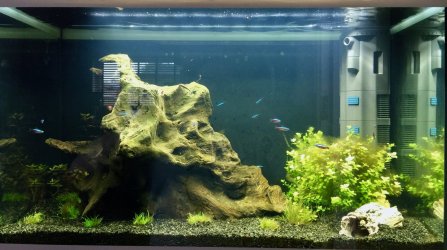justinhill
Fish Fanatic
The tank I inherited is now about as stable as it's going to get, and I'm sure it has finished 'cycling'. Up to now, I've been changing small amounts of water (about 10%) every day and rinsing the filter sponges every 3-4 days in used tank water. I'm now ready to contemplate starting a regular regime and I'd appreciate any advice on what my routine should be. So far, I've been giving the replacement water 24 hours to 'age' and warm up in a bucket before adding it; this is going to get impractical with bigger changes. I'm 'preparing' my water with Stress Coat. At the moment I've got half the lighting on for about 10 hours a day, with full lighting for 3 hours in the middle of the day.
So, what should be my maintenance task list, and what's the frequency?
A reminder of the stats: it's nominally a 125 litre tank in which I can fit about 83 litres in total. pH is 6.5, Nitrite, Ammonia and Phosphate are all holding at or near 0. It's got some immature plants, and 1 gold gourami, 13 cardinals, 2 bamboo shrimp and four algae eaters (probably siamese algae eaters but maybe flying foxes). I'm running it at 23 degrees.
So, what should be my maintenance task list, and what's the frequency?
A reminder of the stats: it's nominally a 125 litre tank in which I can fit about 83 litres in total. pH is 6.5, Nitrite, Ammonia and Phosphate are all holding at or near 0. It's got some immature plants, and 1 gold gourami, 13 cardinals, 2 bamboo shrimp and four algae eaters (probably siamese algae eaters but maybe flying foxes). I'm running it at 23 degrees.


